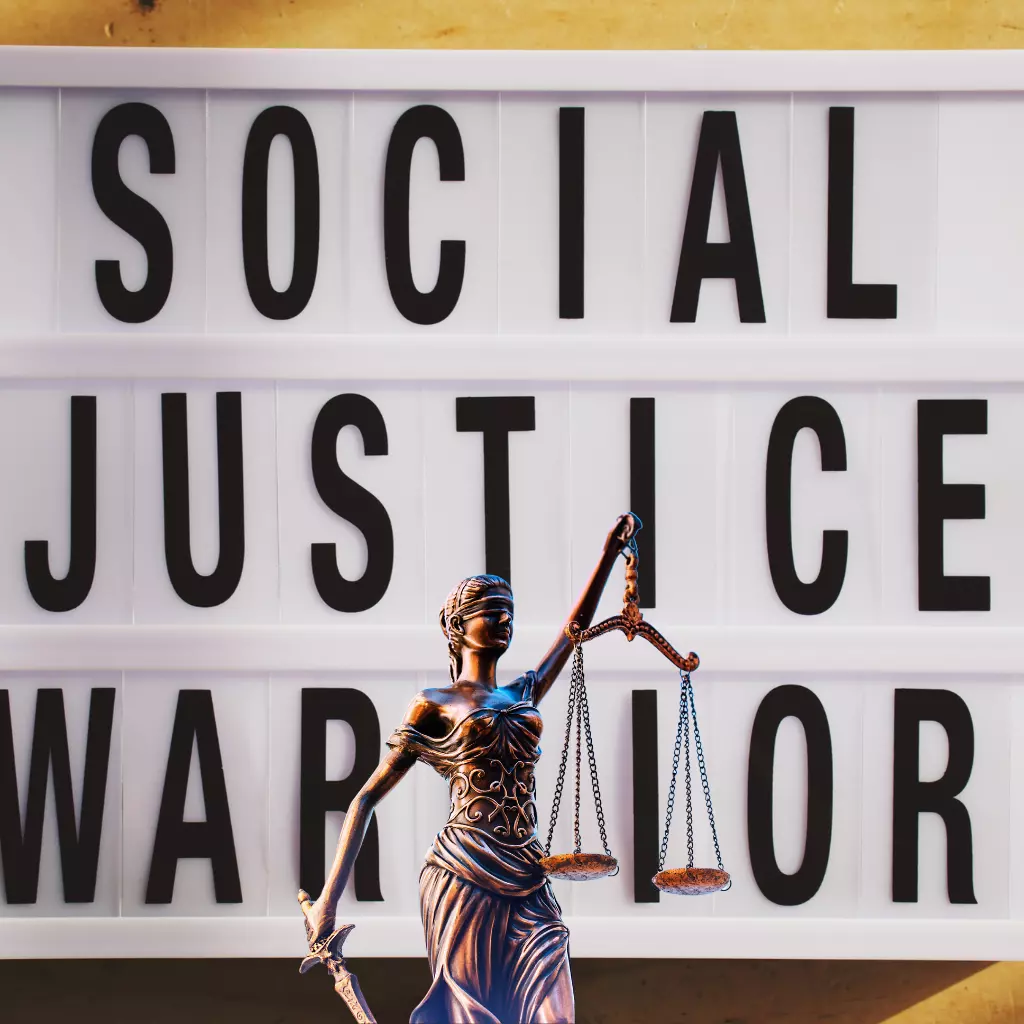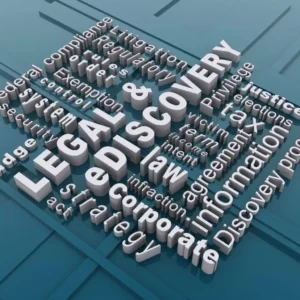
AI in Pro Bono Case Selection
Maximizing Impact
In the realm of social justice, the winds of transformation are blowing. Central to this metamorphosis is the integration of artificial intelligence, specifically in pro bono legal practices.
This article seeks to shed light on the revolutionary ways AI in pro bono case selection is reshaping the landscape. It’s not just about selecting cases more efficiently; it’s about maximizing the impact of each decision.
With a comprehensive dive into AI’s role in influencing social justice trends, optimizing outreach, and crafting global collaborations, we stand at the threshold of an era where the scales of justice balance more equitably.
Join us as we explore this captivating convergence of technology and justice and envision a world where justice’s essence is universal and personalized.
Table of Contents
Efficient Case Selection for Maximum Impact
In the pro bono legal work world, efficiency and impact are paramount. Enter AI in pro bono case selection, a game-changing tool that promises to revolutionize this area. By employing advanced machine learning for pro bono resource allocation, organizations can swiftly identify and prioritize cases that can lead to the most significant societal changes. This AI-driven approach ensures that limited resources are directed effectively and have the most substantial possible influence.
Moreover, when combined with predictive analytics in social justice outcomes, AI can aid in case selection and foresee potential challenges and consequences. Such insights can be invaluable, especially when anticipating the resources a case might demand or its societal ripple effects.
The advancements don’t stop there. AI-driven pro bono outreach and awareness campaigns can amplify the cause, making the community more conscious of available legal aid. By integrating natural language processing into advocacy content, you can capture your target audience’s attention by crafting personalized, captivating messages that truly hit home. Notably, AI-enhanced legal aid operations streamline workflows, ensuring quicker case resolutions.
With all these capabilities, one has to wonder: how will the broader integration of AI tools in pro bono collaboration and networking shape the future landscape of legal advocacy?
Allocating Resources Where They're Needed Most
Are you aware of the biggest challenge in pro bono work? It’s allocating resources to the areas that need them the most. But guess what? AI is here to help! With its intelligent and precise case selection process, it gives us an edge in making a tangible difference. Let’s leverage AI and make the most out of our pro bono work! Through machine learning for pro bono resource allocation, it becomes feasible to pinpoint cases that need attention and can lead to broader societal benefits.
But how do we ensure awareness spreads efficiently? Thanks to AI-driven pro bono outreach and awareness, legal teams can target communities most in need of support while raising general awareness. When natural language processing is utilized in advocacy content, it personalizes messaging to resonate with diverse audiences, including beneficiaries and potential collaborators.
Integrating AI tools for donor and volunteer management takes resource allocation to another level. These tools optimize donor and volunteer engagements, matching skills and resources to the areas of greatest need. And with the support of AI-enhanced legal aid operations, legal teams can offer expedited assistance, ensuring that time-sensitive cases stay within the wayside.
Given these leaps in resource allocation, how might predictive analytics in social justice outcomes further enhance how we distribute our assets in the future?
Amplifying Pro Bono Awareness Campaigns
The battle is half-won when the community is well-informed in the vast realm of legal advocacy. Harnessing AI in pro bono case scenarios extends beyond case selection to awareness. At the heart of this transition is AI-driven pro bono outreach and awareness. Want to get your message in front of the right audience?
With the help of these powerful tools, you can now target specific demographics with precision and make sure your message resonates with the people who matter most. Say goodbye to generic campaigns and hello to effective and engaging communication!
Take, for instance, the role of natural language processing in advocacy content. This advanced AI tool can craft compelling narratives that resonate deeply with various audience groups.
Imagine the power of combining compelling stories with cutting-edge machine learning to allocate resources for social good efficiently. The result is a genuinely impactful and resourceful outreach that can make a real difference in people’s lives.
Integrating AI tools for tracking social justice impact provides real-time feedback on campaign effectiveness. These tools allow for dynamic adjustments, ensuring maximum reach and resonance. Meanwhile, AI-enhanced legal aid operations can provide insights into ground realities, adding depth and authenticity to awareness campaigns.
With such profound advancements, the question beckons: how might the synergy of AI in pro bono collaboration and networking further escalate the reach and efficacy of our awareness efforts?
Predicting and Influencing Social Justice Trends
Understanding future shifts in the social justice landscape isn’t just a luxury; it’s a necessity. With the integration of AI in pro bono case methodologies, we now have the tools to anticipate these shifts and influence them. Central to this is predictive analytics in social justice outcomes. This AI capability allows organizations to project potential societal changes and adapt strategies accordingly.
Imagine being able to predict where your efforts can make the most impact. Thanks to machine learning and analyzing past case outcomes and resource distributions, we can now enrich our foresight for pro bono resource allocation.
This means we can better anticipate where our resources should be allocated to achieve the most effective outcomes in the future. Similarly, AI-enhanced legal aid operations provide real-time data, aiding in quick, informed decisions that align with emerging trends.
Beyond just prediction, there’s the power of influence. AI-powered pro bono outreach and advocacy initiatives can craft targeted messaging using natural language processing. This ensures that advocacy resonates deeply, potentially shaping public opinion and creating groundswells of support.
In light of these advancements, a lingering curiosity emerges: How might AI tools for tracking social justice impact further refine our predictions and increase our capacity to shape the justice narrative?
Streamlining Donor and Volunteer Engagements
The heart of any pro bono initiative lies in its dedicated donors and volunteers. However, managing these invaluable resources requires finesse. Thanks to the innovations of AI in pro bono case strategies, the engagement process has been transformed. Utilizing AI tools for donor and volunteer management, organizations can now create personalized experiences, ensuring that every contributor feels valued and aligned with the cause.
In this framework, machine learning is used to match the skills and resources of volunteers with the most pertinent cases for pro bono resource allocation. This not only amplifies the impact but also enhances volunteer satisfaction. Furthermore, AI-driven pro bono outreach and awareness tools can be pivotal in recruiting new donors and volunteers, targeting those whose passions align with specific advocacy needs.
Have you ever considered the power of natural language processing in advocacy content? With the help of this fantastic AI tool, tailored messaging can resonate deeply with potential contributors, leading to more profound engagements. Thanks to AI-enhanced legal aid operations that streamline case processes, volunteers can now witness quicker and more tangible results from their efforts. It’s incredible how technology can boost our efforts towards a better world!
With such a transformative approach to engagement, one can’t help but ponder: How might AI in pro bono collaboration and networking further elevate the experiences of our community’s benefactors?
Crafting Effective Advocacy Messages with AI
In the realm of pro bono legal work, messaging is everything. It’s not just about what you say but how you say it. With the advent of AI in pro bono case methodologies, crafting compelling narratives has taken on a new dimension. This transformation’s core is the power of natural language processing in advocacy content. By analyzing vast swathes of data and audience sentiment, AI crafts messages that resonate deeply, ensuring advocacy campaigns hit the mark every time.
Further enriching this is the combination of AI-driven pro bono outreach and awareness tools. These applications can determine the most effective channels to reach specific audiences. When paired with machine learning for pro bono resource allocation, these tools guarantee that human and material resources back up these powerful messages, amplifying their impact.
Moreover, the insights from AI-enhanced legal aid operations provide a feedback loop, refining advocacy messages based on real-world outcomes. The advocacy narrative becomes more potent and aligned with societal needs by continually iterating and improving.
With such technological advancements steering our advocacy efforts, it beckons the question: How might predictive analytics in social justice outcomes further refine our messages, ensuring they resonate today and anticipate tomorrow’s challenges?
Building Networks and Collaborations
In pursuing social justice, isolated efforts seldom achieve the desired impact. It’s the synergy of collaborations that genuinely makes a difference. Integrating AI in pro bono case management has unlocked a new frontier in fostering such partnerships. One revolutionary avenue is using AI in pro bono collaboration and networking. These AI platforms can identify potential associations based on shared goals, expertise overlaps, and geographical considerations, creating a nexus of impactful work.
AI-enhanced legal aid operations further enhance the beauty of these collaborations. Streamlining processes ensures that operational inefficiencies stay within partnerships. Meanwhile, AI-driven pro bono outreach and awareness tools play a dual role. They help in publicizing collaborative initiatives while also scouting for new allies.
Collaboration is the key to success, and when it comes to pro bono resource allocation, machine learning is the ultimate tool to ensure that the combined resources of collaborating entities are used to their fullest potential. With the help of natural language processing, advocacy content can be crafted to resonate with all partners, delivering a consistent and powerful message that drives collective impact. Let’s join hands and leverage the power of technology to make a difference in the world!
As AI continues to break barriers and foster unprecedented collaborations, a thought emerges: How might predictive analytics in social justice outcomes reshape how we envision and strategize future partnerships in the pro bono realm?
Measuring the Real-World Impact of Initiatives
Impact measurement isn’t just about numbers, stories, transformations, and real-world change. Understanding this impact becomes pivotal in the context of AI in pro bono case endeavours. Enter AI tools for tracking social justice impact. These sophisticated tools can gather data, analyze patterns, and offer tangible metrics on the effects of pro bono initiatives.
Harnessing predictive analytics in social justice outcomes plays a complementary role. While tracking provides a retrospective view, predictive analytics forecasts the potential ripple effects of current efforts. This dual approach ensures both accountability and strategic foresight. AI-driven pro bono outreach and awareness tools help disseminate impact stories, build trust, and secure more community support.
Machine learning for pro bono resource allocation also chips in by indicating the efficiency of resource utilization in generating desired outcomes. By comparing resource input with impact data, organizations can refine their strategies. Furthermore, natural language processing in advocacy content aids in capturing qualitative feedback, adding depth to the quantitative metrics.
With such comprehensive insights at our fingertips, the lingering thought is: As we deepen our understanding of pro bono impact through AI, how might this influence the evolution of AI in pro bono collaboration and networking to create even more significant change?
Operating Legal Aid Clinics Efficiently
Legal aid clinics are essential for community justice but often face inefficiencies. Leveraging the potential of AI in pro bono case management, these clinics can now streamline processes and extend their reach. A crucial component of this is AI-enhanced legal aid operations. By automating repetitive tasks and intelligently scheduling appointments, AI ensures clinics can serve more clients without overburdening their staff.
Efficiency continues beyond operations. By implementing machine learning for pro bono resource allocation, clinics can better match legal professionals with cases tailored to their expertise. This speeds up case resolution and ensures higher satisfaction levels among clients and legal teams. Furthermore, AI-driven pro bono outreach and awareness tools can help clinics identify community needs in real time, adapting their services accordingly.
In the background, natural language processing in advocacy content aids in drafting legal documents, ensuring precision and reducing the chance of errors. The blend of AI tools streamlines the clinic’s daily operations and guarantees a higher quality of service.
As clinics delve deeper into the AI realm, one has to ponder: How might AI tools for tracking social justice impact further refine the operations of these justice sanctuaries in the future?
The Future Vision for AI in Social Justice
The canvas of social justice, vast and intricate, is set for a profound transformation by the brushstrokes of AI. As we lean into AI in pro bono case scenarios, the horizon reveals a world where justice is more accessible, informed, and timely. Central to this vision is predictive analytics in social justice outcomes. The power to anticipate societal challenges means proactive interventions, pre-empting injustices before they manifest.
Joining forces with AI, pro bono outreach and advocacy efforts can reach and empower communities like never before. By tailoring campaigns to specific audiences, we can create a hyper-personalized experience that speaks directly to the heart of justice. Our advocacy content resonates universally thanks to natural language processing, making it easier than ever to mobilize and inspire positive change.
Collaborations, too, will evolve. AI in pro bono collaboration and networking will craft global alliances, breaking geographical barriers and uniting change-makers across continents. All the while, AI-enhanced legal aid operations will work tirelessly, ensuring that the machinery of justice runs without friction.
Amidst this promising panorama, one can’t help but ponder: As we steer towards this AI-infused future, how will society’s perceptions of justice evolve? And in this evolving narrative, what new roles will humans play in ensuring that AI remains a faithful ally of justice?
In Conclusion: AI's Pivotal Role in Reshaping Social Justice
The transformative journey of integrating AI in pro bono case scenarios illuminates a future where justice becomes more accessible and equitable. We’ve unlocked a comprehensive understanding of real-world change by leveraging AI tools for tracking social justice impact. This, combined with the foresight from predictive analytics in social justice outcomes, creates a powerful duality – ensuring accountability and pre-empting potential challenges.
The success stories we’ve charted are not isolated victories but results of synergetic collaborations. AI in pro bono collaboration and networking has been a catalyst, crafting global alliances and strengthening the collective push towards social justice. Alongside, AI-driven pro bono outreach and awareness campaigns have personalized the message of justice, ensuring it resonates profoundly and universally, thanks to the finesse of natural language processing in advocacy content.
Efficiency in operations, facilitated by AI-enhanced legal aid operations, has maximized the resource utility, with machine learning guiding strategic decisions for pro bono resource allocation. This seamless operation promises an environment where every case, donor, and volunteer gets the attention they deserve.
As society stands at the cusp of this AI-infused future, the perception of justice is bound to evolve. Integrating AI tools promises efficiency and a profound change in how we view, interpret, and act on social justice issues. As humans and AI join forces, the ultimate aim remains constant: crafting a world where justice isn’t just an ideal but a lived reality for all. How will we, as a global community, harness this potential to its fullest? Only time, collaboration, and continued innovation will tell.
Related Articles
- AI in Pro Bono Case Selection: Maximizing Impact
- AI in Alternative Dispute Resolutions: The New Mediator
- AI in Courtroom Support: Revolutionizing Evidence Compilation
- AI-Driven IP Management: From Patents to Trademarks
- AI-Driven Document Categorization: Legal Filing Transformed
- AI in Compliance Monitoring: Legal Standards and Predictive Oversight
- AI-Driven Legal Chatbots: Future of Attorney-Client Interactions
- AI-Driven E-Discovery Platforms: Enhanced Efficiency and Precision
- AI-driven Legal Analytics: Transforming Decision-making and Litigation Strategies
- AI-Driven Legal Research: How Technology is Reshaping the Future of Law
- AI for Contract Analysis: Streamlining Processes and Predicting Success
- Other Articles on AI Usage in Legal
- Other Articles on AI usage in different industries
























